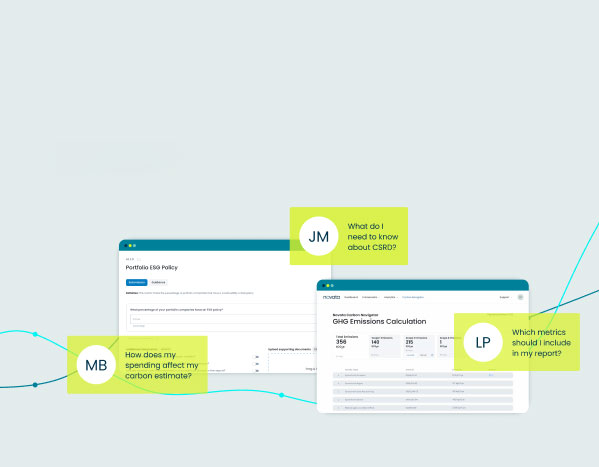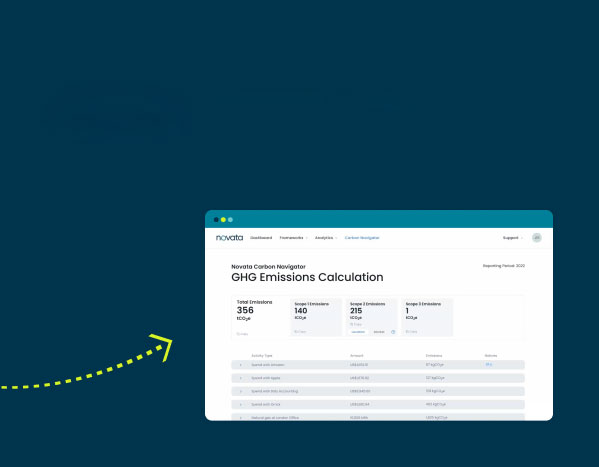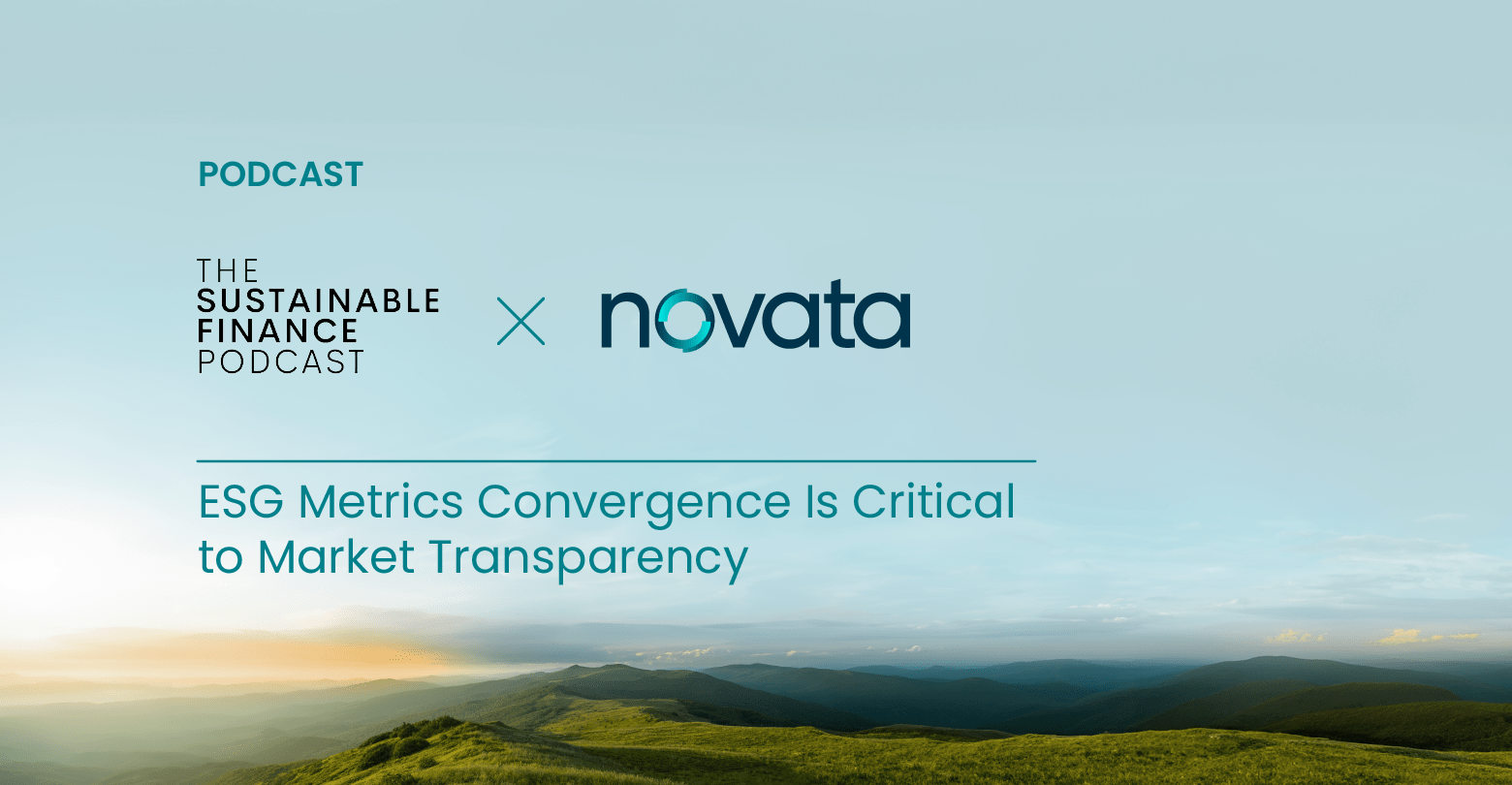Laura Callaghan, Head of EMEA Services at Novata, joins this episode of Sustainable Intelligence to discuss the Corporate Sustainability Reporting Directive (CSRD). Laura breaks down the core components of the CSRD, including the European Sustainability Reporting Standards (ESRS), and emphasizes the importance of starting early, educating the workforce, and conducting a double materiality assessment to identify key sustainability topics. This comprehensive approach helps businesses focus on what’s material to them and ensures CSRD compliance.
About Sustainable Intelligence
Sustainable Intelligence is an interview series from Novata that explores ESG and sustainability in the private markets. From carbon accounting to using data to create value, the series dives into the challenges and opportunities facing private market investors and company leaders as their integrate ESG across the business and respond to regulatory requirements. Each episode centers authentic dialogue, highlighting experts at the forefront of advancing ESG data collection and driving meaningful progress in the sustainability landscape. Listen to more episodes.
Conversation with Laura Callaghan (Transcript)
Ella Williamson: Welcome to Sustainable Intelligence, where we discuss all things ESG and sustainability for the private markets, brought to you by Novata. I’m Ella Williamson and I’m thrilled to be your host. Today, we’re joined by Laura Callaghan, EMEA Services Lead at Novata. Laura is a Chartered Environmentalist and Certified Climate Risk and Sustainability Professional.
Today, we’re going to discuss the Corporate Sustainability Reporting Directive, or CSRD, what the implications are for businesses, and provide actionable insights on key aspects of compliance and sustainability reporting. Laura, so what exactly is the CSRD and why should we care about it?
Laura Callaghan: Brilliant question. I’d say it’s actually a revolutionary regulation in my eyes that has come out because it’s all about bringing transparency to the world of corporate. So historically, we’ve had a lot of regulations out for investors through the Sustainable Finance Disclosure Regulation. But the CSRD is all about helping companies and essentially making companies report on the impact of their activities on the environment and society. And it also requires things like auditing to be part of that process. It was introduced by the European Commission and it enforces private and public European companies as well as non-European companies with a substantial presence within the European Union to report on things like sustainability-related impacts, risks, and opportunities. But at its heart it’s really asking companies to better understand their sustainability risks and it’s also bringing in that important message that we know is ever increasing, which is transparency and making sure that there is a standardized way for companies to be able to report this information.
Ella: I love the way that you frame that as CSRD being a real opportunity for businesses to become more sustainable and drive real progress in the world. So who is actually affected by this directive? Is it just big corporations or does it impact smaller businesses too?
Laura: Great question. So to answer this question, I’m also going to talk about the aim of it. And the aim is really to help key stakeholders, such as investors or consumers or suppliers, better evaluate sustainability performance of companies and to also elevate the importance of sustainability reporting in things like decision making. So with that in mind, it does go beyond the really big giant corporations, and it also reaches all the way through to small- to medium-sized companies. In short, companies are going to be mandated depending on location, size, and financials. Some companies are already implemented by the CSRD, so from 2024, there are lots of companies that are already having to collect information and data, and they’ll have to disclose that in 2025. There’s also large companies that are defined as being in scope of either having a balance sheet of total assets exceeding 25 million euros, net turnover exceeding 50 million euros, or over 250 employees. They’re also going to be impacted from 2025 reporting information in 2026. And this way of layering in the size of the company, the geography of the company, and the financial piece is the easiest way to think about how this regulation is iteratively impacting both large companies in 2024 and 2025 through to smaller, medium-sized enterprises in 2026 and beyond.
Ella: So the directive clearly is very wide-reaching in terms of its impact. And it’s great to understand the iterative approach that it will be rolled out in. Now, can I ask you, what are the core components of the CSRD?
And can I ask you to break down the European Sustainability Reporting Standards or ESRS? What are they all about?
Laura: Good question. I think the terminology of CSRD or the acronym soup is really relevant when it comes to the CSRD because you’ll often see or hear the acronym ESRS spoken about. The easiest way to think about this is that the ESRS stands for European Sustainability Reporting Standards and they are essentially the instructions that you need to follow to be able to comply with CSRD.
In terms of what the ESRS are, they’re split into two different pieces. So you have ESRS 1 and ESRS 2. ESRS 1 describes the general requirements for the content of sustainability reporting and it doesn’t require things like metrics to be reported on. It’s more about the general requirements and this is a cross-cutting standard. Whereas ESRS 2, it contains a core set of metrics that every company must report on, and it also specifies the structure and the content for things like ESRS topical standards. Now what do I mean by topical standards? Well there are 10 topical standards that are divided, named, and numbered by things ESRS E1, which is climate change, ESRS S1, which is own workforce and ESRS G1, which is business conduct. So you may already be picking up here that I’m listing out topics from an environmental, social governance perspective and the ESRS 10 topical standards cover 10 different topics across environmental and social and governance pieces. And in order for companies to establish which of these topics they need to report on, they need to do something called a double materiality assessment.
Ella: Great. So it sounds like the ESRS are going to really standardize how companies report ESG data and therefore bring real consistency to sustainability reporting. Now, for those companies who are impacted, what are some practical tips or advice that you could give them today?
Laura: My number one tip would be, don’t leave it ’til the last minute and start now. I mentioned earlier that I believe the CSRD is a revolutionary regulation. But in addition to being revolutionary, it’s also hard, it’s complicated, there’s lots of different things that you must do. So there are mandatory elements that you have to follow and everything from the disclosure and the processes and the documentation and evidence also has to go through an audit process and has to be assured. So the last thing any company wants to do is to kind of go half heartedly into this and then find out at that point of disclosing that an auditor is saying, no, no, no, that’s not, that’s not good enough. That’s not, that’s not compliant. So really start to familiarize yourself with what the CSRD is. We love to use a term in my team called get ready.
And we have a set of different readiness offerings that we offer to our customers, where we’ll do a gap analysis and baseline where they’re currently positioned. What their governance strategy, risk management metrics, and target pieces look like, and also looking at any existing disclosures or metrics that they may be collecting to figure out where those areas of low hanging fruit are. It’s all about education. So as part of the double materiality assessment, stakeholder engagement is really important and without actually educating your stakeholders on what some of these more complex topics are like biodiversity or climate change, the outputs that you’re going to get from that assessment may not necessarily be valuable or meaningful. So educating your workforce from the outset is really important to make sure that the processes you’re following are really well understood and that everybody understands what their responsibility is when it comes to the data collection process.
Ella: Thanks, Laura. Thank you for framing that as a real opportunity for businesses, but also flagging that it is not an easy process to follow. What I took from what you said there was that it’s all about starting early, educating your workforce, getting expert help in-house and also using technology, which will help you manage this data effectively.
Now, I’ve heard a lot about double materiality, and I know you just mentioned it then. Can you explain what that means in simple terms and why it is so important?
Laura: Absolutely. So one element to think about here is with the CSRD, there could be up to 1,200 data points that companies need to report. How you narrow down that number of data points is really determined by what we call a double materiality assessment. And this is a process that is mandatory. So every company has to do this double materiality assessment as part of the CSRD compliance. And it’s all about figuring out, identifying, assessing what topics, so those 10 topical standards I mentioned earlier, which of those are material to the business? And by material I mean in accordance with impact materiality and also financial materiality.
Now many companies may already be familiar with what’s known as impact materiality because things like the GRI cover this. And that’s about the impact of the company on people and planets. We also have financial materiality, which is something that the SASB standards are typically based on, and that’s all about the financial impacts on the company. So, double materiality is taking a two-pronged approach, so considering impact and financial. It’s used to assess impacts, risks, and opportunities in relation to sustainability topics in a company. And where a sustainability matter is deemed to be material, so when it meets the criteria that that company is set, so what thresholds have been set from a high, medium, and low perspective, that is when they’ll be able to say whether that is a topic that they need to be both addressing internally, but also disclosing metrics for.
So let’s use climate change as an example. It may be that climate change is material to the business because they are a manufacturing company and they’re heavily reliant on things like fossil fuels. And we know that there’s a process to decarbonisation economies across the world. So financially that may present a huge risk to that business. But also as a manufacturing company, they may also be having an impact on climate because they’re burning fossil fuels and they’re therefore contributing to climate change. So climate change may be a material topic to them and that means that they’ll have to disclose various different pieces of information around the topic of climate change in their disclosures. Within the double materiality assessment, it’s really important as well, as I mentioned, to think about stakeholder engagement. So bringing in anybody that may be impacted by your business or anybody that you think is impacting your business, stakeholders such as investors, customers, local communities, figuring out how you can engage best with them, whether it be through surveys, interviews, focus groups, it’s also mapping all of that process out and establishing a key rationale.
So when it comes to the audit process, you can clearly articulate and state the process that you’ve taken as part of the double materiality assessment and why you found a topic to be material or immaterial.
Ella: Thanks, Laura. So although it is a heavy lift at the beginning of the process, it sounds like it really helps companies focus on what is material to them. Laura, thank you so much for today and for all your insights.
It was fascinating having you on and hearing all about the CSRD. Until next time, let’s keep building sustainable intelligence together. Find out more at www.novata.com.






